Foods That Can Block Vitamin Absorption Without You Knowing
Vitamin deficiencies affect millions globally, with an estimated two billion people lacking essential micronutrients, according to the World Health Organization. Despite diverse diets, hidden barriers in our digestive systems can hinder vitamin uptake, making deficiencies surprisingly common. The digestive process is complex, and many are unaware that certain foods can interfere with the absorption of vital nutrients. Recognizing these subtle disruptions is challenging, often leading to undiagnosed health issues. Understanding which foods may block vitamin absorption is crucial for maintaining optimal health and preventing the silent epidemic of vitamin deficiencies.
1. Spinach
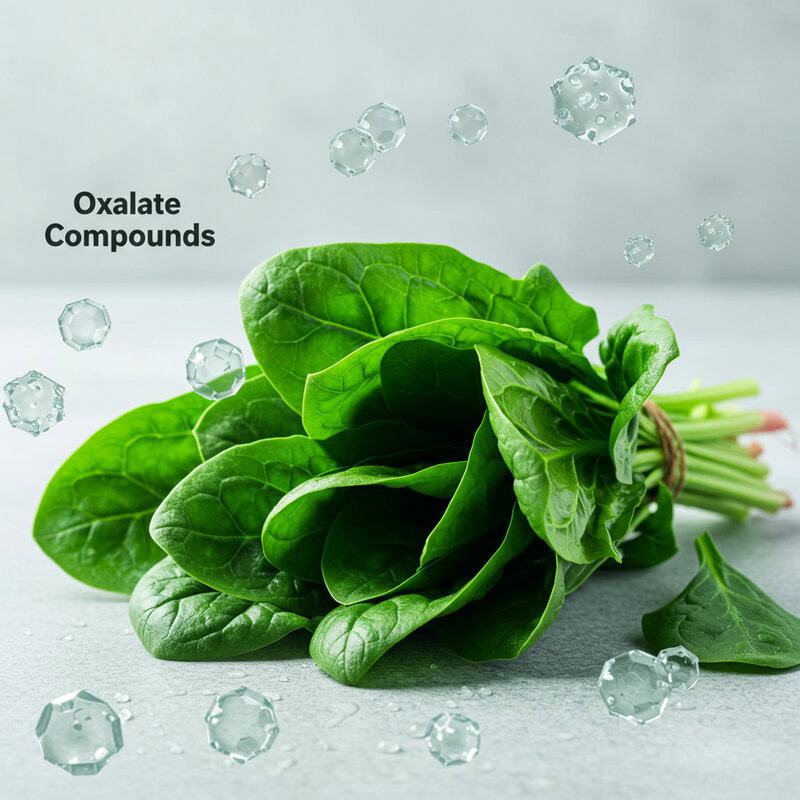
Spinach is often hailed as a superfood, but its high oxalate content can actually hinder the absorption of crucial minerals like calcium and iron. Oxalates are naturally occurring compounds that bind with minerals in the digestive tract, forming insoluble complexes that the body cannot absorb. This process significantly reduces the bioavailability of calcium and non-heme iron found in plant-based foods, raising concerns for those who rely on spinach for their nutrient intake. According to the National Institutes of Health, consuming large amounts of oxalate-rich foods may increase the risk of mineral deficiencies over time.
To minimize the impact of oxalates, consider pairing spinach with vitamin C-rich foods such as bell peppers or citrus fruits, which can enhance iron absorption. Cooking spinach instead of eating it raw can also reduce oxalate levels, making minerals more accessible to the body. For those who require high calcium or iron intake, alternating spinach with other leafy greens like kale or collard greens, which have lower oxalate concentrations, is a practical strategy. Thoughtful meal planning can help you enjoy the benefits of spinach without compromising essential mineral absorption.
2. Black Tea

Black tea is a popular beverage worldwide, appreciated for its rich flavor and potential health benefits. However, it contains high levels of tannins, a group of polyphenols that can significantly inhibit the absorption of non-heme iron from plant-based sources. Tannins bind with iron in the digestive tract, forming insoluble complexes that are poorly absorbed by the body. Research shared by the National Library of Medicine indicates that drinking black tea with meals can reduce iron absorption by up to 60% in some cases, posing a particular concern for individuals prone to iron deficiency.
Comparative studies show that habitual tea drinkers, especially those who consume tea with meals, often have lower iron stores than non-tea drinkers or those who separate tea consumption from meal times. To mitigate this effect, experts recommend drinking black tea between meals rather than during them. Additionally, incorporating vitamin C-rich foods into meals can counteract the inhibitory impact of tannins, enhancing iron absorption. For those at risk of iron deficiency, being mindful of tea-drinking habits is essential, and adjusting meal timing can help maintain optimal iron levels without giving up the enjoyment of black tea.
3. Raw Egg Whites

Raw egg whites are sometimes consumed by fitness enthusiasts seeking low-calorie, high-protein nutrition. However, raw egg whites contain a protein called avidin, which strongly binds to biotin (vitamin B7) in the digestive tract. This bond prevents the absorption of biotin, a water-soluble vitamin critical for energy metabolism, hair, skin, and nail health. Regular consumption of raw egg whites can potentially lead to biotin deficiency, manifesting as skin rashes, hair loss, and neurological symptoms. According to research by the National Center for Biotechnology Information, this risk is significant for individuals who consistently include raw egg whites in their diets.
Within certain segments of the fitness community, raw egg whites are popular due to their low fat and carbohydrate content. However, these individuals may be unknowingly decreasing their biotin absorption over time. Cooking egg whites denatures avidin, rendering it inactive and preventing it from binding to biotin. For those who prioritize protein intake, opting for cooked eggs ensures safe biotin absorption while still delivering the nutrient benefits. Fitness enthusiasts should be aware of this risk and adjust their meal preparation methods to support optimal vitamin intake and overall health.
4. Alcohol

Alcohol consumption, especially in excess or over a prolonged period, significantly impairs the absorption and metabolism of essential vitamins, most notably B vitamins (such as B1, B6, B12, and folate) and vitamin C. Alcohol interferes with nutrient absorption in the gastrointestinal tract by damaging the cells lining the stomach and intestines and altering digestive enzyme secretion. As a result, chronic drinkers are highly susceptible to deficiencies in these vitamins, which are crucial for nerve function, energy production, and immune support. According to a study published by the National Institutes of Health, chronic alcohol consumption can lead to clinical symptoms such as anemia, neuropathy, and increased susceptibility to infections due to impaired vitamin absorption.
Research indicates that chronic drinkers often present with lower levels of B vitamins and vitamin C than non-drinkers, even when their dietary intake is similar. This is compounded by alcohol’s impact on liver function, which is essential for vitamin storage and conversion. To mitigate these effects, medical professionals recommend moderation in alcohol intake and regular monitoring of vitamin levels for those who drink frequently. Supplementation and a nutrient-rich diet are also advised to counteract deficiencies associated with alcohol use.
5. Soy Products

Soy products, such as tofu, tempeh, and soy milk, are staple foods in many plant-based and vegetarian diets due to their protein content and versatility. However, soy also contains phytates (phytic acid), naturally occurring compounds that can bind to minerals like zinc and iron in the digestive tract, forming insoluble complexes that hinder their absorption. This effect is particularly significant for individuals who consume soy as a primary protein source. According to the National Institutes of Health Office of Dietary Supplements, high-phytate diets can reduce the bioavailability of both zinc and non-heme iron, potentially increasing the risk of deficiency, especially in populations with limited access to animal-based foods.
Studies of populations with soy-rich diets, such as certain Asian communities, show lower rates of zinc and iron absorption compared to those who consume more animal proteins. To mitigate these effects, traditional food preparation methods such as soaking, fermenting, or sprouting soybeans can significantly reduce phytate levels, thereby enhancing mineral uptake. For those relying heavily on soy, incorporating vitamin C-rich foods in meals can also boost iron absorption. Balancing soy intake with a variety of other plant and animal foods ensures adequate mineral nutrition and helps prevent deficiencies linked to phytate consumption.
6. Coffee
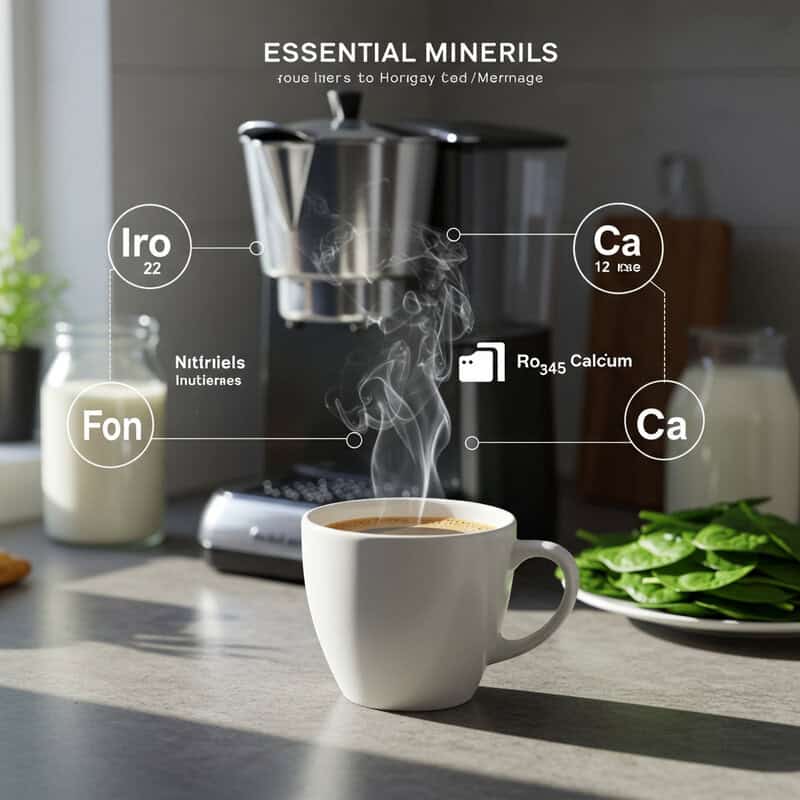
Coffee is an integral part of many people’s morning routines, but few are aware of its impact on nutrient absorption. Coffee contains not only caffeine but also a range of polyphenols, both of which can interfere with the body’s ability to absorb essential minerals such as iron and calcium. Caffeine has been shown to increase urinary calcium excretion, while coffee’s polyphenols can bind non-heme iron in the digestive tract, reducing its bioavailability. According to research published by the National Institutes of Health, drinking coffee with or shortly after meals can lower iron absorption by up to 39%.
Many people pair coffee with breakfast, often alongside iron- or calcium-rich foods like eggs or fortified cereals. This timing can inadvertently decrease the absorption of these critical nutrients, potentially contributing to deficiencies over time, particularly in individuals at higher risk such as women and vegetarians. To minimize this effect, experts suggest waiting at least an hour after eating before consuming coffee or choosing to drink it between meals. For those who rely on coffee to jumpstart their day, being mindful of its timing in relation to meals can help support better nutrient absorption and overall health.
7. High-Fiber Bran Cereals
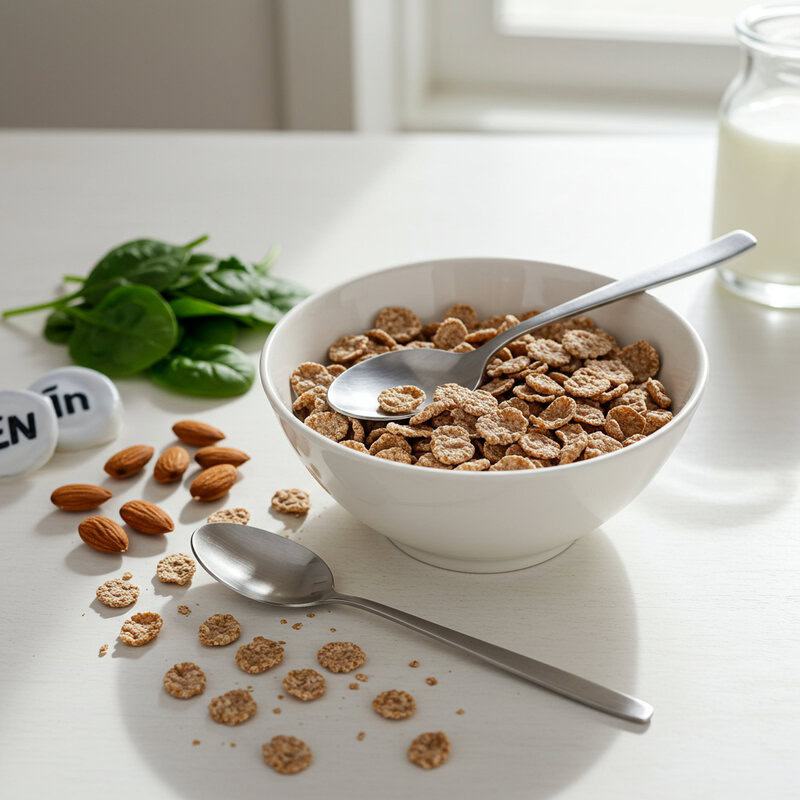
High-fiber bran cereals are frequently promoted as a healthy breakfast choice due to their ability to support digestive health and regulate blood sugar. However, these cereals are rich in insoluble fibers and phytates, both of which can negatively impact the absorption of essential minerals such as iron, zinc, magnesium, and calcium. Insoluble fiber speeds up intestinal transit time, providing less opportunity for minerals to be absorbed, while phytates, naturally present in bran, bind to minerals in the digestive tract and form insoluble complexes the body cannot utilize. A review published by the National Institutes of Health highlights that diets high in unrefined cereal fibers can compromise mineral status, particularly in populations that rely heavily on cereal-based diets.
This issue is especially relevant for individuals who consume bran cereals as a primary breakfast food, often in combination with milk or other fortified products. While bran cereals offer benefits, their high phytate and fiber content requires careful consideration, particularly for those at risk of mineral deficiencies. Soaking or fermenting grains, or alternating with lower-fiber breakfast options, can help reduce these effects. Adding vitamin C-rich fruits to cereal can also enhance iron absorption, making a balanced approach crucial for optimal nutrient intake.
8. Dairy (in Excess)
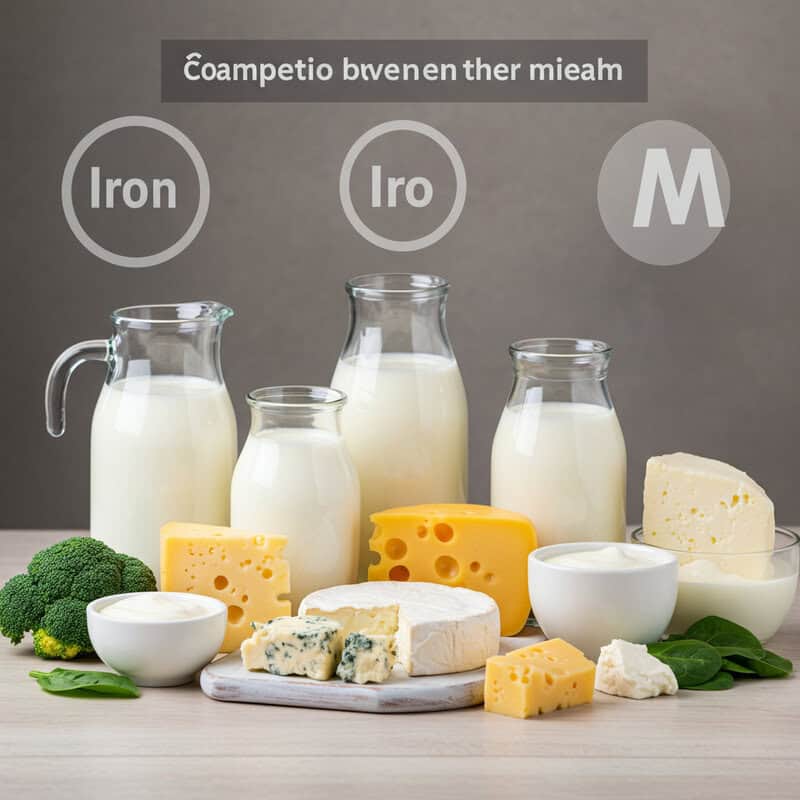
Dairy products are well-known sources of calcium, which is crucial for bone health and numerous bodily functions. However, excessive intake of calcium from dairy can inhibit the absorption of other essential minerals, most notably iron and magnesium. High levels of dietary calcium compete with iron for absorption sites in the intestines, particularly affecting non-heme iron from plant-based foods. Additionally, calcium can interfere with magnesium uptake, potentially leading to nutrient imbalances. According to the National Institutes of Health, consuming large amounts of dairy, especially in supplement form, may reduce the bioavailability of iron and magnesium, increasing the risk of deficiency in susceptible populations.
Many individuals include dairy in multiple meals and snacks throughout the day, sometimes exceeding recommended daily calcium intakes. This is especially common among those aiming for strong bones or following high-protein diets. To support optimal absorption of all minerals, it is important to balance dairy consumption with a variety of other foods. Spacing out dairy intake from meals rich in iron or magnesium, and incorporating plant-based sources of calcium, can help maintain nutritional balance. Moderation and dietary diversity are key strategies for preventing mineral absorption issues related to high dairy consumption.
9. Grapefruit

Grapefruit is a nutrient-dense fruit, celebrated for its vitamin C content and refreshing flavor. However, it contains unique compounds called furanocoumarins, which can interfere with key enzymes involved in metabolizing not only medications but also certain vitamins. Furanocoumarins inhibit the activity of cytochrome P450 enzymes, particularly CYP3A4, which play a central role in the metabolism of vitamin D and other fat-soluble vitamins. This interference can disrupt the conversion of vitamin precursors into their active, usable forms, potentially leading to altered vitamin status over time. The U.S. Food and Drug Administration cautions that grapefruit’s enzyme-inhibiting effects are well-documented and can have significant health implications.
While most research on grapefruit’s furanocoumarins focuses on drug interactions, the same enzyme pathways are responsible for activating certain vitamins. For individuals who consume grapefruit regularly, or take vitamin supplements, this fruit’s effect on enzyme activity should not be overlooked. Moderation is key, and those on specific vitamin regimens or medications should consult with a healthcare provider to assess potential interactions. Understanding grapefruit’s complex role in nutrient metabolism can help prevent unintended disruptions to vitamin absorption and utilization.
10. Legumes
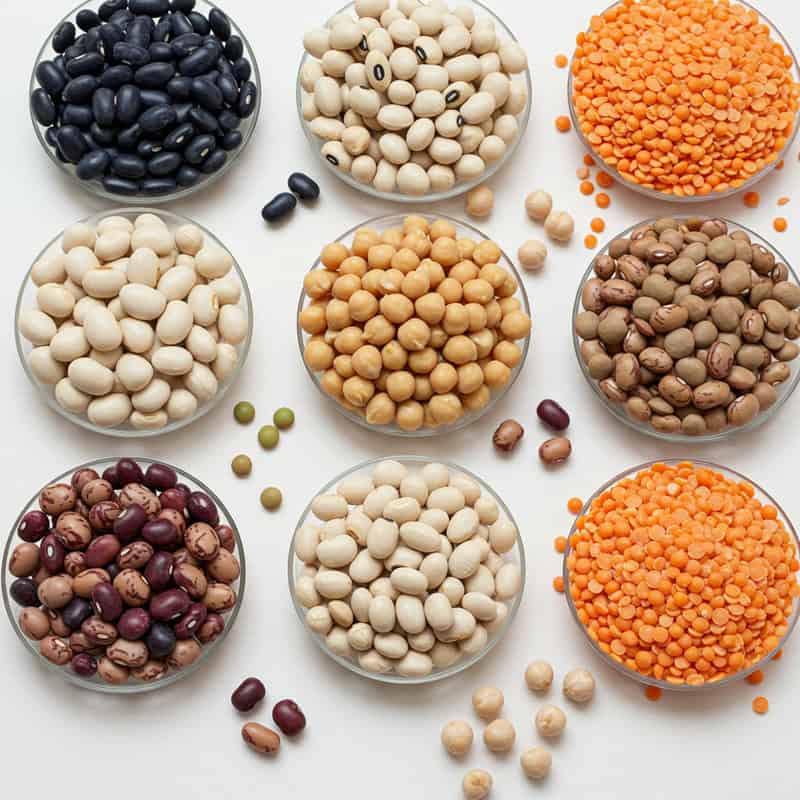
Legumes, such as beans, lentils, and chickpeas, are praised for their high protein and fiber content, making them staples in vegetarian and plant-based diets. However, they also contain anti-nutritional factors like lectins and phytates, which can interfere with the absorption of important minerals, particularly iron and zinc. Lectins are proteins that bind to carbohydrates and can impede nutrient absorption by disrupting the gut lining, while phytates bind iron and zinc in the digestive tract, forming insoluble complexes that the body cannot utilize efficiently. According to the National Institutes of Health, diets high in unprocessed legumes can result in lower bioavailability of these minerals.
For those who rely heavily on legumes as a protein source, the risk of iron and zinc deficiency becomes more pronounced, especially if other dietary sources of these minerals are limited. Traditional preparation methods, such as soaking, sprouting, and fermenting beans and lentils, can reduce lectin and phytate levels, thereby improving mineral absorption. Combining legumes with vitamin C-rich foods can also enhance the uptake of non-heme iron. A varied diet and mindful preparation techniques are essential to maximize the nutritional benefits of legumes while minimizing their impact on mineral absorption.
11. Processed Meats

Processed meats, such as bacon, sausages, deli meats, and hot dogs, are commonly consumed for their convenience and flavor. However, these foods often contain high levels of additives like nitrates and phosphates, which can have negative effects on mineral absorption, particularly calcium. Phosphates, used as preservatives and flavor enhancers, can bind with calcium in the digestive tract to form insoluble salts, reducing the amount of calcium available for absorption. This can compromise bone health over time, especially in individuals who consume processed meats frequently. Studies referenced by the National Institutes of Health confirm that excess dietary phosphate, especially from processed foods, is associated with impaired calcium metabolism and increased risk of bone disorders.
Nitrates, while less directly involved in calcium absorption, may also impact gut health and nutrient utilization when consumed in high amounts. People who rely on processed meats as a protein source may unknowingly reduce their calcium uptake, particularly if their overall dietary calcium intake is marginal. To mitigate these risks, it is advisable to limit processed meat consumption and opt for fresh, minimally processed protein sources. Ensuring adequate intake of fruits, vegetables, and dairy can further support healthy calcium levels and overall mineral balance.
12. Whole Grains (Unsoaked)

Whole grains, such as wheat, oats, barley, and brown rice, are considered highly nutritious due to their fiber, vitamin, and mineral content. However, when consumed unsoaked or unprocessed, whole grains are significant sources of phytic acid, an anti-nutrient that can bind to important minerals like iron, calcium, magnesium, and zinc, forming insoluble complexes that hinder absorption in the digestive tract. This is especially concerning for individuals who rely on whole grains as dietary staples. According to the National Institutes of Health, long-term consumption of high-phytate diets may contribute to mineral deficiencies, particularly in vulnerable populations such as children and pregnant women.
Traditional food preparation methods, including soaking, sprouting, and fermenting grains, can significantly reduce phytic acid levels, thereby improving mineral bioavailability. These processes activate natural enzymes that break down phytates, making minerals more accessible for absorption. For optimal nutrient uptake, it is advisable to incorporate these preparation techniques when using whole grains in meals. Alternatively, combining whole grains with vitamin C-rich foods can further support iron absorption. A mindful approach to whole grain preparation ensures their health benefits are maximized without compromising essential mineral intake.
13. Rhubarb

Rhubarb, known for its tart flavor and use in desserts, is also recognized for its high oxalate content. Oxalates are naturally occurring compounds that can bind with minerals such as calcium and magnesium in the digestive tract, forming insoluble crystals that the body cannot absorb. This process reduces the bioavailability of these essential minerals, potentially impacting bone and muscle health if rhubarb is consumed in large quantities or as a regular dietary component. According to research from the National Institutes of Health, foods high in oxalates can significantly lower calcium and magnesium absorption and have been associated with an increased risk of kidney stone formation in susceptible individuals.
While occasional consumption of rhubarb is unlikely to cause problems for most people, those with a history of kidney stones or at risk of mineral deficiencies should be cautious. Cooking rhubarb can reduce its oxalate content, making minerals more available for absorption. Pairing rhubarb with calcium-rich foods is not recommended, as oxalates may still bind the calcium and limit its uptake. Being mindful of oxalate-rich foods like rhubarb, and varying your fruit and vegetable choices, can help support optimal mineral balance.
14. Chocolate

Chocolate, especially dark chocolate, is often enjoyed for its rich taste and antioxidant properties. However, it contains notable amounts of oxalates and caffeine, both of which can negatively affect calcium absorption. Oxalates, as found in many plant foods, bind to calcium in the digestive tract and form insoluble compounds, thereby reducing the body’s ability to absorb this crucial mineral. Caffeine, present in varying levels in chocolate, can further inhibit calcium absorption by increasing urinary excretion of calcium. Research highlighted by the National Institutes of Health suggests that frequent consumption of oxalate- and caffeine-rich foods may contribute to lower calcium status, particularly in individuals with already marginal calcium intake.
The effect is most pronounced in those who consume large amounts of chocolate or combine it with other oxalate- or caffeine-containing foods and beverages. While moderate chocolate consumption is unlikely to cause significant issues for most people, those at risk for osteoporosis or with higher calcium requirements should be mindful of their intake. Opting for milk chocolate, which contains some calcium, or pairing chocolate treats with calcium-rich foods at separate times may help offset potential negative effects. Balance and moderation remain key in maintaining healthy calcium absorption.
15. Red Wine

Red wine is widely appreciated for its rich flavor and potential cardiovascular benefits, but it also contains a high concentration of polyphenols, particularly tannins. These polyphenols can significantly inhibit the absorption of non-heme iron, which is the form of iron found in plant-based foods. Tannins bind with iron in the digestive tract, forming insoluble complexes that are not readily absorbed by the body. Research published by the American Journal of Clinical Nutrition demonstrates that consuming red wine with a meal can decrease non-heme iron absorption by up to 75%, a notable concern for individuals at risk of iron deficiency, such as vegetarians and women of reproductive age.
Enjoying red wine as part of a meal is a common practice, especially in Mediterranean cultures. However, frequent pairing of red wine with iron-rich plant foods may inadvertently contribute to lower iron levels over time. To mitigate this effect, experts recommend consuming red wine in moderation and avoiding it during meals that are high in non-heme iron. Including vitamin C-rich foods in the same meal can help counteract the inhibitory action of polyphenols and enhance iron absorption, supporting better overall nutrient status.
16. High-Sodium Foods

High-sodium foods, which are often found in processed snacks such as chips, crackers, instant noodles, and canned soups, can have a detrimental effect on calcium balance in the body. Excessive sodium intake increases calcium excretion through urine, which over time may weaken bones and contribute to the risk of developing osteoporosis. According to the National Institutes of Health, for every 2,300 mg of sodium consumed (the amount in one teaspoon of salt), approximately 40 mg of calcium is lost in the urine.
Processed foods are a significant source of hidden sodium, and frequent consumption can quickly lead to intakes far above recommended daily limits. This effect is particularly concerning for individuals whose calcium intake is already marginal or who are at higher risk for bone health issues, such as postmenopausal women and the elderly. To minimize calcium loss, it is important to read nutrition labels, choose lower-sodium alternatives, and prioritize fresh foods over processed options. Maintaining a balanced diet that includes adequate calcium and limited sodium can help preserve bone health and optimize mineral absorption, preventing the long-term consequences of excessive sodium consumption.
17. Cruciferous Vegetables
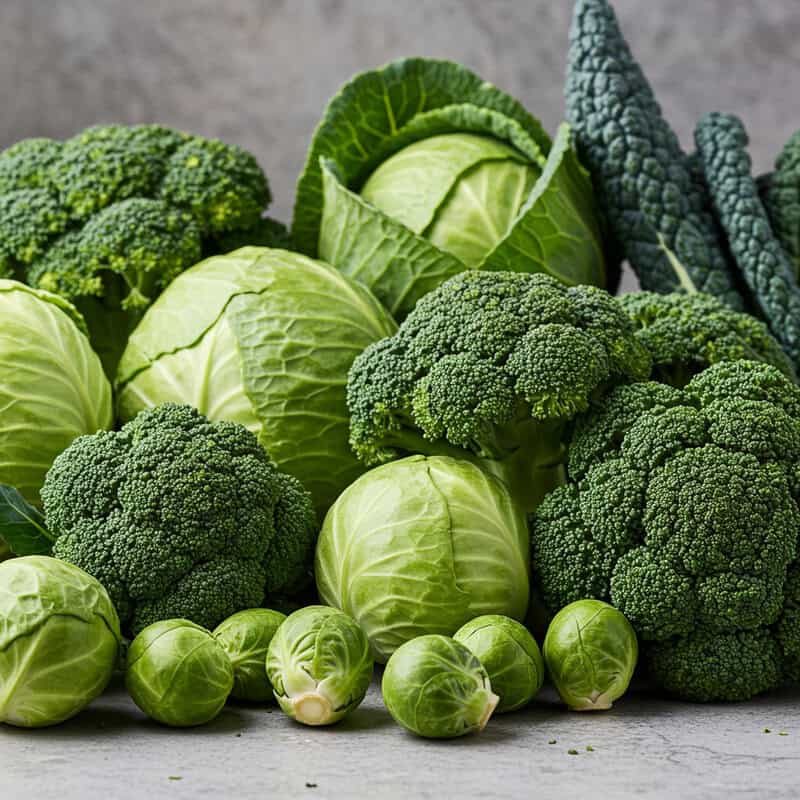
Cruciferous vegetables, including broccoli, kale, cabbage, and Brussels sprouts, offer a wealth of nutrients, antioxidants, and fiber. However, they also contain natural compounds called goitrogens, which can interfere with the uptake of iodine, an essential mineral required for proper thyroid function. Goitrogens compete with iodine for absorption in the thyroid gland and can inhibit the synthesis of thyroid hormones, particularly when consumed in large quantities or in individuals with marginal iodine intake. According to the National Institutes of Health Office of Dietary Supplements, high consumption of raw cruciferous vegetables has been linked to the development of goiter and other thyroid-related issues, especially in populations where iodine deficiency is already a concern.
Cooking cruciferous vegetables can help reduce their goitrogen content, making them safer for regular consumption without compromising iodine status. For most people with adequate iodine intake, moderate consumption of these vegetables poses little risk. However, those with thyroid disorders or low dietary iodine should be mindful of their intake and ensure they receive sufficient iodine from other sources, such as iodized salt or seafood. Balancing the health benefits of cruciferous vegetables with proper iodine nutrition supports both thyroid health and overall well-being.
18. Citrus Fruits with Certain Medications
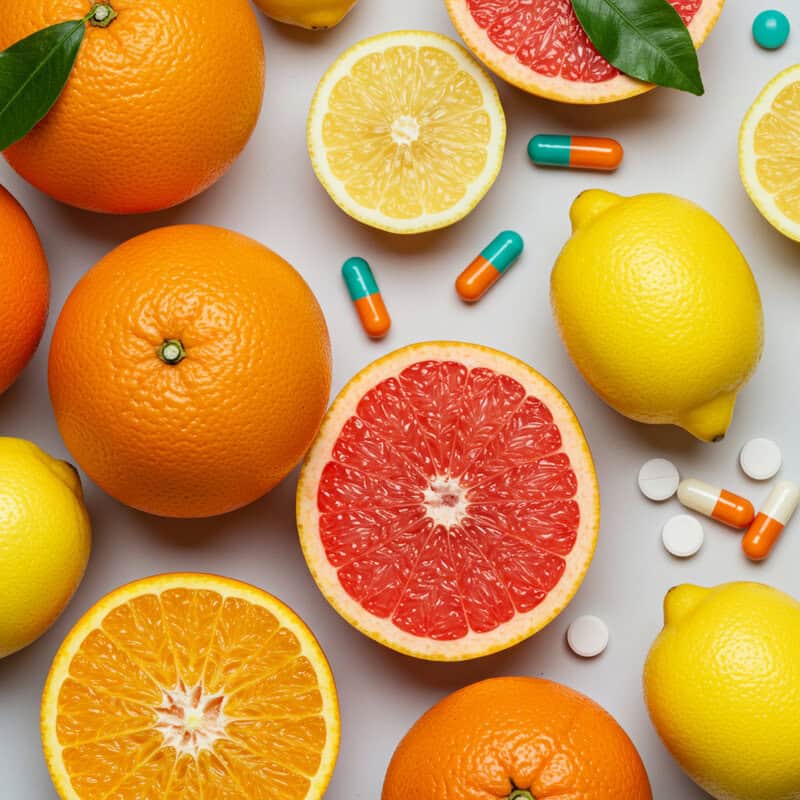
Citrus fruits, such as oranges, lemons, and grapefruits, are renowned for their high vitamin C content and immune-boosting properties. However, these fruits contain bioactive compounds—most notably furanocoumarins and flavonoids—that can interfere with the metabolism of certain medications by affecting the cytochrome P450 enzyme system in the liver. This interference can alter how medications are processed, potentially increasing or decreasing their effectiveness and leading to unintended side effects. According to the U.S. Food and Drug Administration, grapefruit juice in particular is well-known for its ability to disrupt the metabolism of drugs such as statins, antihistamines, and some blood pressure medications.
When medication metabolism is altered, it can also indirectly affect the absorption and utilization of certain vitamins. For example, if a medication’s efficacy is reduced or increased, it may impact the body’s ability to absorb, store, or convert vitamins, particularly those that rely on the same metabolic pathways. Individuals taking prescription medications should consult with healthcare professionals before increasing their intake of citrus fruits or juices. Understanding these interactions is crucial for maintaining both medication safety and optimal vitamin metabolism.
19. Tofu
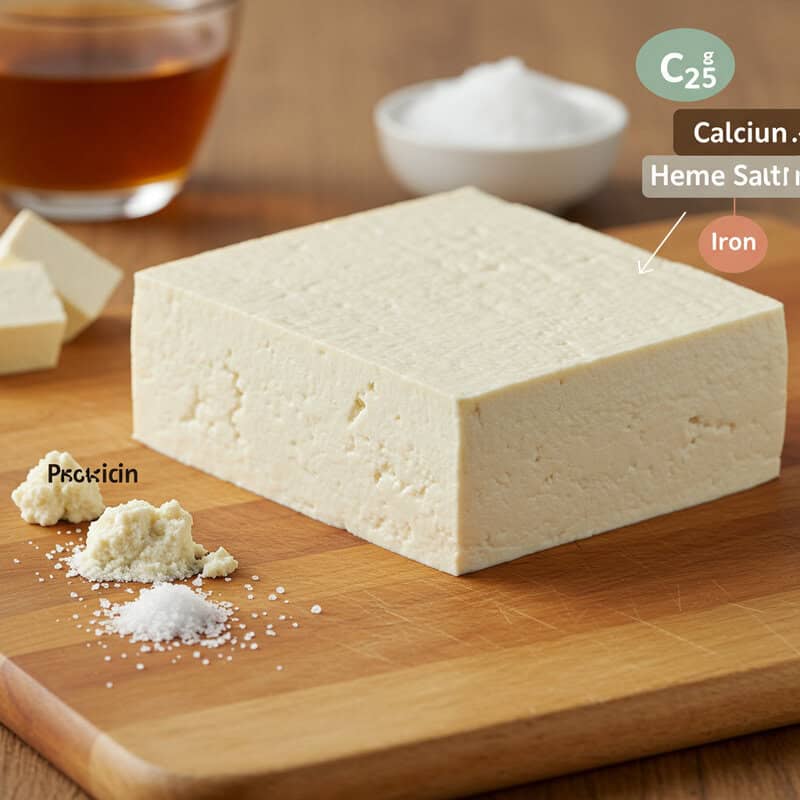
Tofu, a staple in many plant-based diets, is often lauded for its high protein content and versatility. Many commercial tofu products are set with calcium salts, such as calcium sulfate, to enhance their nutritional profile. While this fortification increases calcium intake, it can also inadvertently inhibit the absorption of non-heme iron—the form of iron found in plant-based foods. Calcium competes with iron for absorption in the intestinal tract, and studies indicate that even modest increases in dietary calcium can reduce non-heme iron uptake. According to research from the National Institutes of Health, calcium intake from fortified foods like tofu may significantly lower iron absorption when consumed together in the same meal.
This interaction is particularly important for vegetarians and vegans, whose primary iron sources are plant-based and already less efficiently absorbed by the body. To maximize iron absorption, it is advisable to space out calcium-rich and iron-rich meals or pair tofu with vitamin C-rich foods, such as bell peppers or citrus fruits, which can help counteract calcium’s inhibitory effect. Being mindful of these nutrient interactions is key to maintaining balanced mineral levels and preventing deficiencies in plant-based diets.
20. High-Phosphorus Sodas

High-phosphorus sodas, such as many colas and dark soft drinks, often contain phosphate additives to enhance flavor and shelf life. These additives can have a significant impact on calcium metabolism by binding with calcium in the digestive tract and reducing its absorption. Excessive phosphorus intake, particularly from sodas rather than natural food sources, disrupts the delicate balance between calcium and phosphorus in the body, which is vital for maintaining healthy bones and teeth. Research published by the National Institutes of Health links high-phosphorus beverage consumption to decreased calcium uptake and an increased risk of bone demineralization and osteoporosis, especially among adolescents and young adults who frequently consume these drinks.
The issue is exacerbated when sodas are consumed in place of calcium-rich beverages like milk or fortified plant milks, leading to both increased phosphorus and decreased calcium intake. Over time, this imbalance can contribute to weakened bones and a higher risk of fractures. To protect bone health, it is advisable to limit consumption of high-phosphorus sodas and opt for water, natural juices, or calcium-fortified beverages. Awareness of the effects of phosphate additives is essential for making informed dietary choices that support optimal mineral absorption and skeletal health.
21. Cabbage

Cabbage is a widely consumed cruciferous vegetable, valued for its fiber, vitamins, and cancer-fighting compounds. However, it also contains substances known as thiocyanates, which are produced when the vegetable is chopped or chewed. Thiocyanates can interfere with the body’s ability to utilize iodine by inhibiting its uptake in the thyroid gland. This competition can disrupt the synthesis of thyroid hormones, which are essential for regulating metabolism, growth, and development. According to the National Institutes of Health Office of Dietary Supplements, excessive consumption of raw cabbage and other cruciferous vegetables increases the risk of goiter and hypothyroidism, particularly in individuals with marginal iodine intake.
Cooking cabbage reduces the concentration of thiocyanates, making it safer for regular consumption while still providing its health benefits. For most people, moderate intake of cabbage is unlikely to pose a risk if they also consume sufficient iodine from iodized salt or seafood. However, those with existing thyroid conditions or living in regions where iodine deficiency is prevalent should be particularly mindful of their cabbage consumption. Balancing cabbage with other vegetables and ensuring adequate iodine intake can help prevent disruptions to thyroid function and overall metabolic health.
22. Green Tea

Green tea is celebrated for its antioxidant properties and potential health benefits, but it also contains high levels of catechins—polyphenolic compounds that can negatively impact the absorption of non-heme iron from plant-based foods. Catechins bind with iron in the digestive tract, creating complexes that are less readily absorbed by the body. This effect is particularly significant for individuals who consume green tea regularly with meals, as it can exacerbate the risk of iron deficiency, especially among vegetarians, vegans, and women of reproductive age. Research published in the National Institutes of Health demonstrates that green tea can reduce non-heme iron absorption by as much as 25% when consumed at mealtime.
To minimize the inhibitory effect of green tea on iron absorption, nutritionists recommend drinking it between meals rather than during or immediately after eating. Additionally, pairing iron-rich foods with vitamin C sources, such as citrus fruits or bell peppers, can help counteract the impact of catechins and improve iron uptake. Awareness of these nutrient interactions allows tea drinkers to enjoy the benefits of green tea while still supporting healthy iron levels and overall nutritional status.
23. Artificial Sweeteners
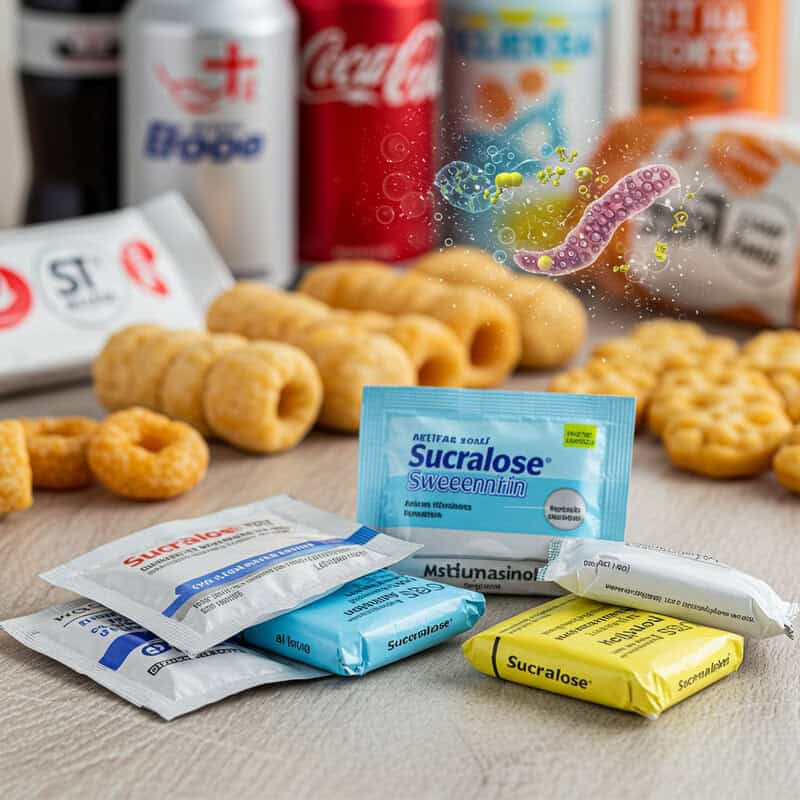
Artificial sweeteners, including sucralose, aspartame, and saccharin, are widely used as sugar substitutes in diet sodas, sugar-free snacks, and various processed foods. While they provide sweetness without calories, emerging research suggests that some artificial sweeteners may alter the composition of gut microbiota—microorganisms in the digestive tract that play a crucial role in synthesizing and absorbing certain vitamins, particularly B vitamins like biotin and folate. According to a review by the National Institutes of Health, artificial sweeteners have been shown to disrupt the balance of beneficial bacteria, potentially impairing the gut’s ability to produce and absorb vital nutrients.
This disruption may contribute to reduced synthesis of vitamins and affect overall digestive health over time, especially with frequent or high intake of artificial sweeteners. Individuals who rely on sugar-free products as a primary source of sweetness may be particularly at risk for subtle nutrient imbalances. To help maintain a healthy gut microbiome, it is recommended to moderate the consumption of artificial sweeteners and include a diverse range of fiber-rich, unprocessed foods in the diet. Understanding the broader effects of artificial sweeteners can support choices that protect both gut and nutrient health.
24. Unripe Bananas

Unripe, or green, bananas are distinguished by their high content of resistant starch—a type of carbohydrate that resists digestion in the small intestine and passes into the colon where it acts as a prebiotic fiber. While resistant starch offers digestive benefits, such as supporting healthy gut bacteria, it can also have a minor inhibitory effect on the absorption of certain minerals, including calcium, iron, and magnesium. This occurs because resistant starch may bind to these minerals in the gut, reducing their immediate bioavailability. According to a study published by the National Institutes of Health, resistant starch can slightly decrease mineral absorption, though the effect is generally less pronounced than that of phytates or oxalates found in other foods.
For most people, moderate consumption of unripe bananas is unlikely to cause significant mineral deficiencies, especially when included in a varied and balanced diet. The prebiotic benefits of resistant starch may even outweigh its minor impact on mineral absorption for many individuals. However, those with higher mineral needs should be mindful of the cumulative effects of various anti-nutritional factors in their overall diet. Choosing ripe bananas or varying fruit choices can help ensure optimal nutrient uptake.
25. Grapes
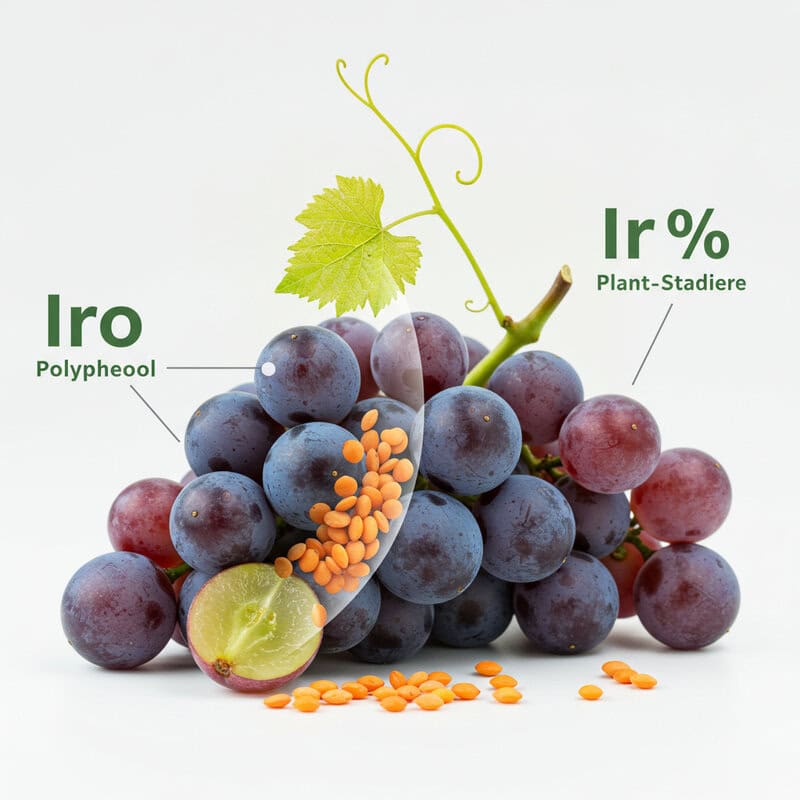
Grapes, renowned for their antioxidant-rich polyphenols such as tannins and flavonoids, offer numerous health benefits, including cardiovascular support and anti-inflammatory properties. However, these same polyphenols can also inhibit the absorption of non-heme iron—the form of iron predominantly found in plant-based foods. Polyphenols bind to iron in the digestive tract, forming complexes that are less readily absorbed by the body. Research highlighted by the National Institutes of Health indicates that diets high in polyphenol-containing foods, such as grapes, can significantly reduce non-heme iron bioavailability, particularly when consumed with iron-rich meals.
This effect is especially relevant for vegetarians, vegans, and individuals with increased iron requirements, such as pregnant women or growing children. While grapes are a nutritious snack and beneficial for overall health, it is advisable to separate their consumption from main meals that are high in non-heme iron, or to pair iron-rich foods with vitamin C sources, which can counteract the inhibitory effects of polyphenols and enhance iron absorption. Awareness of these interactions allows for better dietary planning and can help support healthy iron status without sacrificing the enjoyment and nutritional value of grapes.
26. High-Fat Meals

High-fat meals, especially those rich in saturated and trans fats, are commonly associated with negative health effects such as increased cholesterol and cardiovascular risk. Less well known, however, is their potential to impair the absorption of water-soluble vitamins, including vitamin C and the B-complex group (such as B1, B2, B6, B12, and folate). When dietary fat intake is excessive, it can slow gastric emptying and alter digestive secretions, creating an environment in the intestines that is less favorable for the absorption of water-soluble vitamins. According to a study published by the National Institutes of Health, diets consistently high in fat can disrupt the delicate balance necessary for optimal nutrient uptake.
Additionally, high-fat meals may displace vitamin-rich foods, leading to lower overall intake of water-soluble vitamins. This is particularly concerning for individuals who consume large amounts of fried foods, processed snacks, and fatty meats at the expense of fruits, vegetables, and whole grains. To promote optimal absorption of all vitamins, it is important to balance fat intake and prioritize a variety of nutrient-dense foods. Moderation and dietary diversity remain key strategies for supporting comprehensive vitamin absorption and overall health.
27. Raw Cruciferous Sprouts
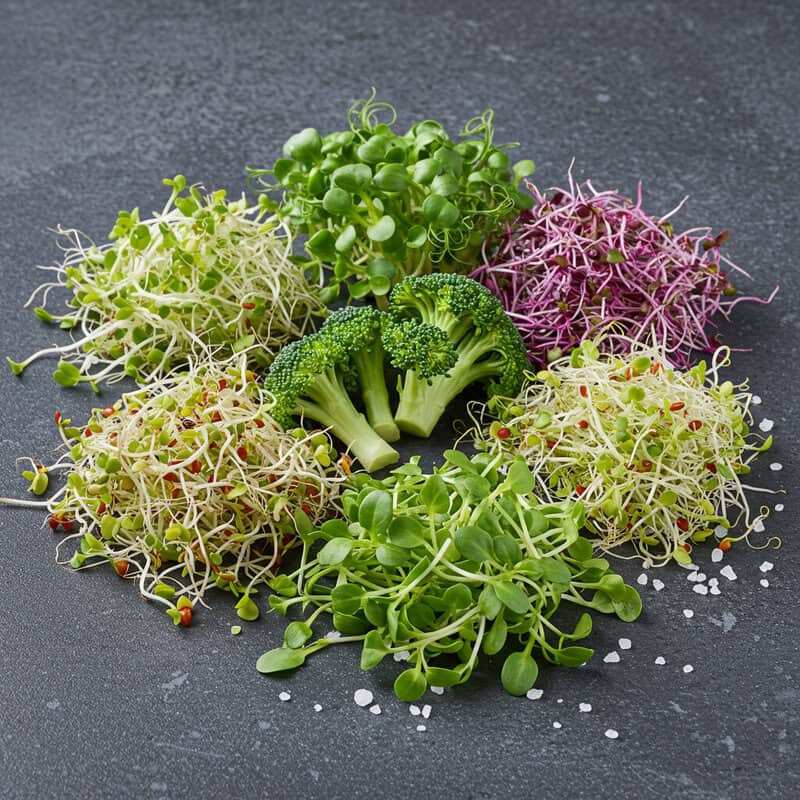
Raw cruciferous sprouts, such as broccoli, radish, and alfalfa sprouts, are often included in salads and sandwiches for their fresh flavor and nutrient density. However, these young plant shoots contain concentrated levels of goitrogens—natural compounds that can interfere with iodine uptake in the thyroid gland. Goitrogens compete with iodine and can inhibit thyroid hormone production, potentially affecting metabolism and overall thyroid function. According to the National Institutes of Health Office of Dietary Supplements, consuming large amounts of raw cruciferous sprouts may increase the risk of goiter or exacerbate thyroid issues, particularly in individuals with marginal iodine intake or existing thyroid disorders.
The goitrogen content in sprouts is typically higher than in mature vegetables, making their impact more significant when eaten raw and in quantity. While most people with adequate iodine in their diet are unlikely to experience problems from moderate sprout consumption, those with thyroid concerns should exercise caution. Lightly steaming or cooking sprouts can reduce their goitrogenic potential, allowing for safer consumption. Including a balance of iodine-rich foods, such as seafood or iodized salt, alongside raw sprouts can further help protect thyroid health and maintain proper metabolic function.
28. Walnuts

Walnuts are prized for their healthy fats, omega-3 content, and antioxidants, making them a popular addition to balanced diets. However, like many nuts and seeds, walnuts also contain significant levels of phytates (phytic acid), which can bind to essential minerals such as iron and zinc in the digestive tract. This binding forms insoluble complexes that the body cannot efficiently absorb, potentially reducing the bioavailability of these crucial nutrients. According to the National Institutes of Health, diets high in phytate-containing foods, especially when not combined with mineral-enhancing preparation techniques, may contribute to iron and zinc deficiencies, particularly in populations relying heavily on plant-based foods.
For those who consume walnuts as a primary snack or protein source, especially in vegetarian or vegan diets, the cumulative effect of phytates may be noteworthy. To mitigate this impact, methods such as soaking or lightly roasting walnuts can help reduce phytate content and enhance mineral absorption. Additionally, pairing walnuts with vitamin C-rich fruits or vegetables can further support iron uptake. By being aware of these interactions and including a variety of nutrient sources, individuals can enjoy the health benefits of walnuts while minimizing their potential to block mineral absorption.
29. Eggplant

Eggplant, also known as aubergine, is celebrated for its versatility in cooking and its content of beneficial phytonutrients, including nasunin—a powerful anthocyanin found primarily in the skin of the vegetable. Nasunin is recognized for its antioxidant properties, but research suggests it may also have the ability to bind to iron, forming complexes that could reduce the absorption of non-heme iron from plant-based foods. A study published in the National Institutes of Health indicates that anthocyanins like nasunin can inhibit iron uptake in the digestive tract, particularly when eggplant is consumed alongside iron-rich plant foods.
This effect is most relevant for individuals who rely heavily on plant sources of iron, such as vegetarians and vegans, or those with increased iron needs. While the iron-blocking effect of nasunin is less pronounced than more potent inhibitors like tannins or phytates, regular, high intake of eggplant in iron-dependent diets could contribute to suboptimal iron status. To offset this impact, it is advisable to pair iron-rich meals with vitamin C-containing foods, which can counteract the inhibitory effect of anthocyanins and enhance iron absorption. Moderation and dietary variety remain the best strategies for maximizing nutrient uptake.
30. Sweet Potatoes
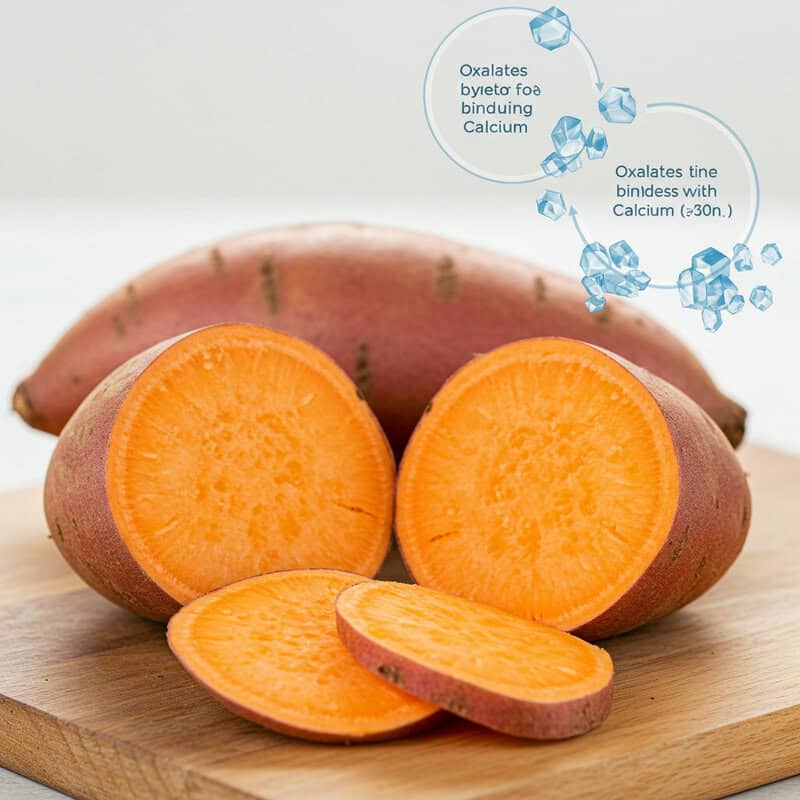
Sweet potatoes are widely valued for their rich supply of vitamins, minerals, and fiber, making them a staple in health-conscious diets. However, they also contain notable levels of oxalates—naturally occurring compounds that can bind with calcium in the digestive tract, forming insoluble crystals that reduce calcium’s bioavailability. This binding effect may impact bone health and calcium status over time, especially in populations with marginal calcium intake or increased requirements. According to a review published by the National Institutes of Health, oxalate-rich foods like sweet potatoes can inhibit intestinal calcium absorption, although the extent varies depending on a person’s overall diet and nutritional status.
For most individuals, the occasional consumption of sweet potatoes as part of a varied diet is unlikely to pose a significant risk to calcium absorption. However, those who consume sweet potatoes frequently, or rely heavily on oxalate-rich foods, should be mindful of their total dietary calcium intake. Cooking sweet potatoes can help reduce their oxalate content slightly, making calcium more available for absorption. Pairing sweet potatoes with low-oxalate, calcium-rich foods in other meals can help maintain healthy calcium levels and support optimal bone health.
31. Red Kidney Beans (Uncooked)
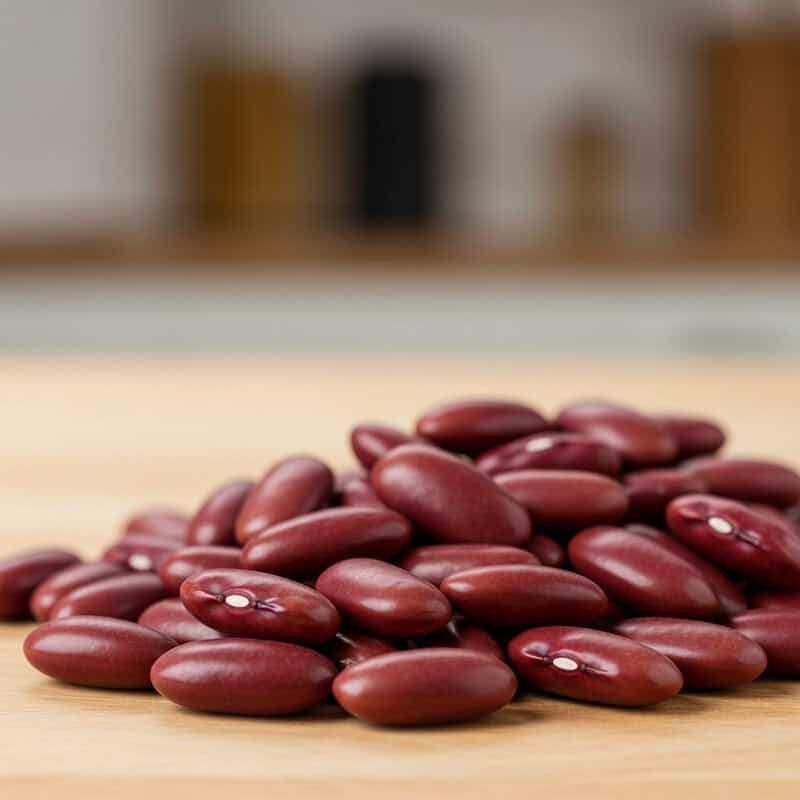
Red kidney beans are a nutritious and affordable source of plant protein, fiber, and micronutrients. However, when undercooked or consumed raw, they contain high concentrations of lectins—specifically phytohemagglutinin, a protein that can disrupt the lining of the gut and impede the absorption of vitamins and minerals. Lectins have the ability to bind to the epithelial cells of the intestines, interfering with nutrient transport and potentially causing digestive discomfort or toxicity. According to the National Institutes of Health, the lectin content in raw or undercooked red kidney beans is sufficient to cause acute gastrointestinal symptoms and can hinder the absorption of essential vitamins such as B12, as well as minerals like calcium and iron.
To neutralize lectins, red kidney beans must be soaked and then boiled thoroughly for at least 10 minutes before consumption. Slow cooking or undercooking does not sufficiently break down lectins and can increase health risks. Individuals who regularly include beans in their diet should pay careful attention to proper preparation methods to preserve nutrient availability and maximize health benefits. Properly cooked beans are safe, nutritious, and unlikely to interfere with vitamin and mineral absorption.
32. Buckwheat
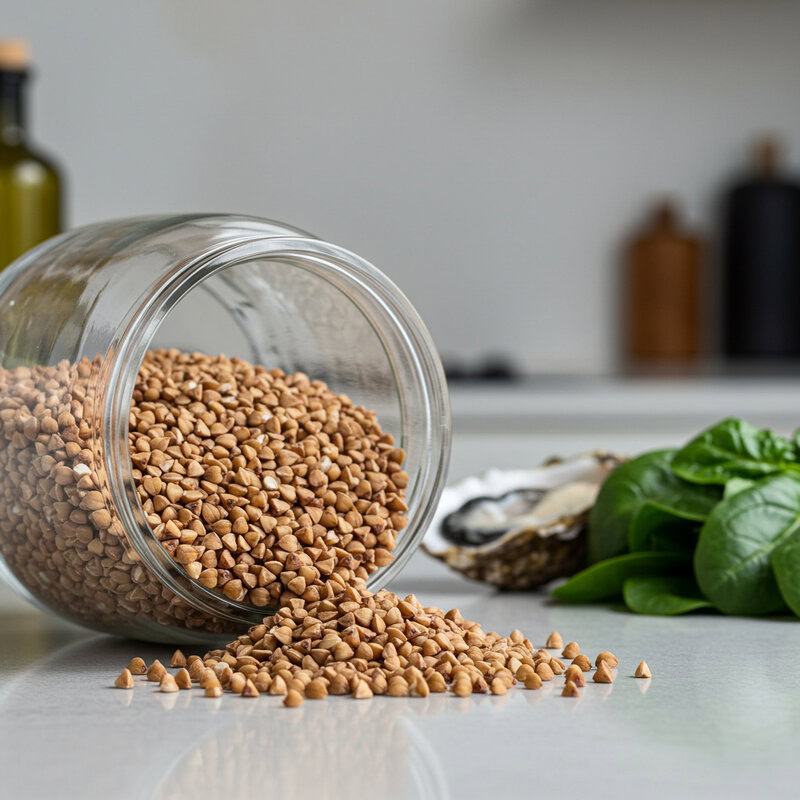
Buckwheat is a gluten-free pseudocereal celebrated for its high content of protein, fiber, and essential micronutrients. However, like many whole grains and seeds, buckwheat contains significant levels of phytic acid, an anti-nutrient that can bind to minerals such as magnesium and zinc, reducing their absorption in the digestive tract. Phytic acid forms insoluble complexes with these minerals, making them less available for uptake by the body. According to the National Institutes of Health, diets high in unprocessed grains and seeds, including buckwheat, may increase the risk of mineral deficiencies, particularly in individuals who have limited access to animal-based foods or whose dietary diversity is low.
For those relying on buckwheat as a staple, especially in plant-based diets, it is important to use traditional food preparation methods such as soaking, fermenting, or sprouting to help reduce phytic acid content and improve mineral bioavailability. Incorporating vitamin C-rich foods into meals can also boost zinc and magnesium absorption. By being aware of the potential inhibitory effects of phytic acid and employing strategies to overcome them, it is possible to enjoy the nutritional benefits of buckwheat while supporting optimal magnesium and zinc status.
33. Tomatoes (with Calcium Supplements)
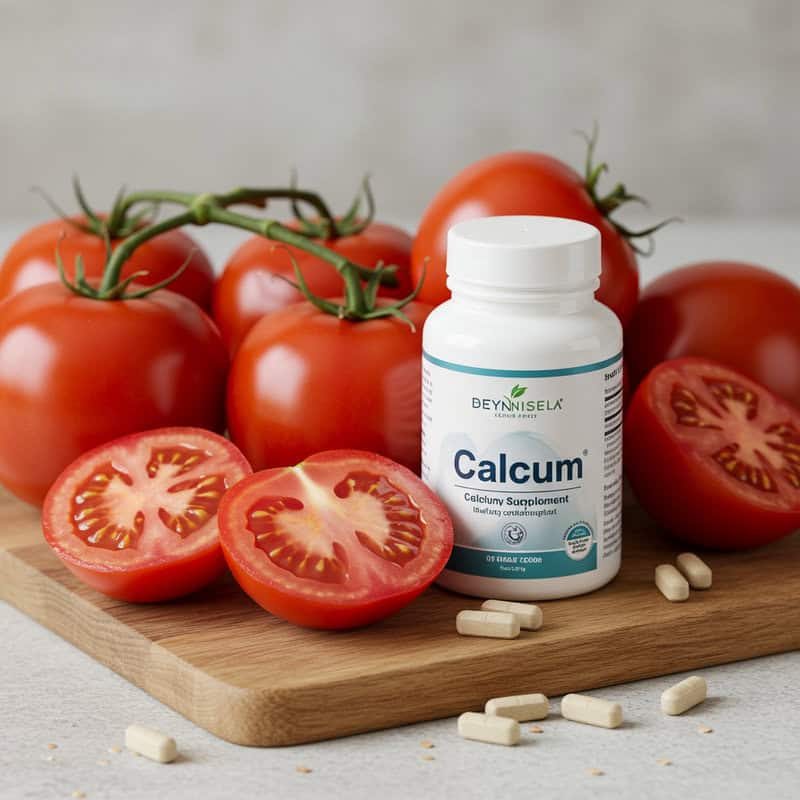
Tomatoes are a beloved addition to countless dishes, prized for their vitamin C, potassium, and antioxidant content. However, their naturally high acidity can influence the absorption of certain mineral supplements, most notably calcium. Calcium carbonate, a common form of calcium supplement, requires acidic conditions in the stomach for optimal absorption. While this may seem like a benefit, consuming tomatoes or other high-acid foods at the same time as taking calcium supplements can sometimes lead to rapid dissolution and precipitation of the mineral, potentially lowering its overall bioavailability. According to the National Institutes of Health Office of Dietary Supplements, the timing and form of calcium intake can significantly affect how much is absorbed by the body.
For individuals who rely on calcium supplements, especially those with low stomach acid or who are older adults, it may be beneficial to take supplements with meals but not necessarily with highly acidic foods like tomatoes or citrus. Alternatively, choosing other forms of calcium, such as calcium citrate, which is less dependent on stomach acid, can help ensure better absorption. Awareness of these interactions supports more effective supplementation and helps prevent unintended nutrient losses.
34. Cranberries

Cranberries are well-known for their tart flavor, high vitamin C content, and role in promoting urinary tract health. However, they also contain significant amounts of tannins—polyphenolic compounds that can bind with non-heme iron in the digestive tract and reduce its absorption. Tannins act by forming insoluble complexes with iron, making it less available for uptake by the body. According to the National Institutes of Health, diets high in tannin-rich foods, such as cranberries, tea, and certain fruits, can significantly decrease non-heme iron absorption, especially when these foods are consumed alongside iron-rich plant-based meals.
This interaction is particularly important for individuals at risk of iron deficiency, including vegetarians, vegans, and women of reproductive age. While occasional consumption of cranberries is unlikely to cause problems for most people, habitual intake with iron-rich foods may contribute to lower iron status over time. To counteract the inhibitory effect of tannins, it is advisable to pair iron-rich meals with vitamin C-containing foods, which enhance non-heme iron absorption. Awareness of such nutrient interactions can help preserve optimal iron levels while still enjoying the health benefits of cranberries.
35. Peanuts
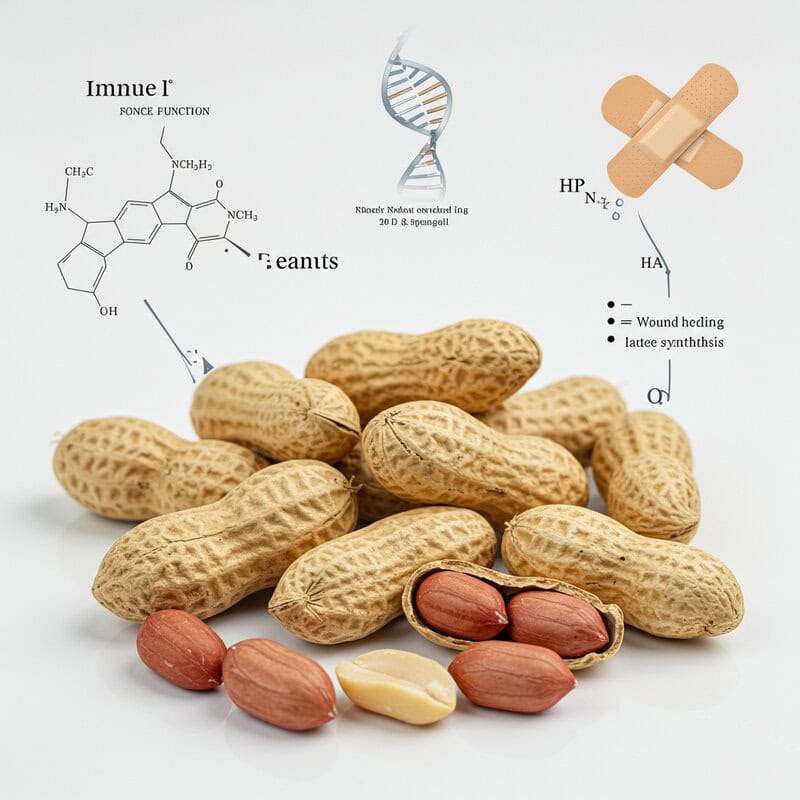
Peanuts are a popular snack and a staple in various cuisines, celebrated for their protein, healthy fats, and vitamin E content. However, like many legumes and nuts, peanuts are also rich in phytates (phytic acid), a compound that can bind to minerals in the digestive tract and reduce their bioavailability. This binding effect is particularly significant for zinc, an essential mineral involved in immune function, wound healing, and DNA synthesis. According to the National Institutes of Health, high phytate consumption from foods like peanuts may decrease zinc absorption, especially in populations that rely heavily on plant-based diets or have higher zinc requirements.
The impact of phytates on zinc bioavailability is most pronounced when peanuts are consumed raw or as a primary protein source. Traditional preparation techniques such as roasting, soaking, or fermenting peanuts can help reduce phytate levels and improve zinc absorption. To further enhance zinc uptake, pairing peanuts with animal proteins or vitamin C-rich foods in the diet may be beneficial. By understanding the role of phytates in peanuts and employing preparation methods that lower their anti-nutrient content, it is possible to enjoy the nutritional advantages of peanuts without compromising zinc status.
36. Artichokes

Artichokes are highly regarded for their fiber content, antioxidant compounds, and their ability to support digestive health. One of the primary fibers found in artichokes is inulin, a type of prebiotic fiber that resists digestion in the upper gastrointestinal tract and is instead fermented by gut bacteria in the colon. While inulin provides numerous benefits for gut health, it can have a mild inhibitory effect on the absorption of some minerals, particularly calcium, magnesium, and iron. Inulin’s ability to bind minerals and alter gut transit time may slightly reduce the immediate bioavailability of these nutrients. However, research published by the National Institutes of Health suggests that the overall impact of inulin on mineral absorption is relatively modest compared to the effects of phytates or oxalates.
For most individuals, the prebiotic benefits of inulin far outweigh any minor reduction in mineral absorption, as inulin helps support a healthy gut microbiome and may even enhance long-term mineral uptake by improving gut health. Including a variety of fiber sources and mineral-rich foods in the diet ensures that any inhibitory effects of inulin are balanced. Artichokes remain a nutritious addition to meals, supporting both digestive and overall health.
37. Asparagus

Asparagus is a nutrient-dense vegetable, rich in vitamins A, C, E, and K, as well as folate and fiber. Among its natural compounds are saponins, a group of glycosides known for their potential health-promoting effects. While saponins have been studied for their antioxidant and cholesterol-lowering properties, they can also interact with the absorption of certain nutrients, particularly fat-soluble vitamins such as vitamins A, D, E, and K. Saponins are amphipathic, meaning they can bind to fats and form complexes that may mildly interfere with the absorption of these vitamins in the digestive tract. According to the National Institutes of Health, the impact of saponins on fat-soluble vitamin absorption is generally considered minor and is unlikely to lead to deficiencies when asparagus is consumed as part of a varied diet.
For most people, the health benefits of asparagus—including its prebiotic fiber and micronutrient content—far outweigh any slight reduction in vitamin absorption due to saponins. To maximize nutrient uptake, pairing asparagus with a small amount of healthy fat, such as olive oil or avocado, can help enhance the absorption of fat-soluble vitamins. Overall, asparagus remains a valuable and healthful addition to balanced meals.
38. Sunflower Seeds
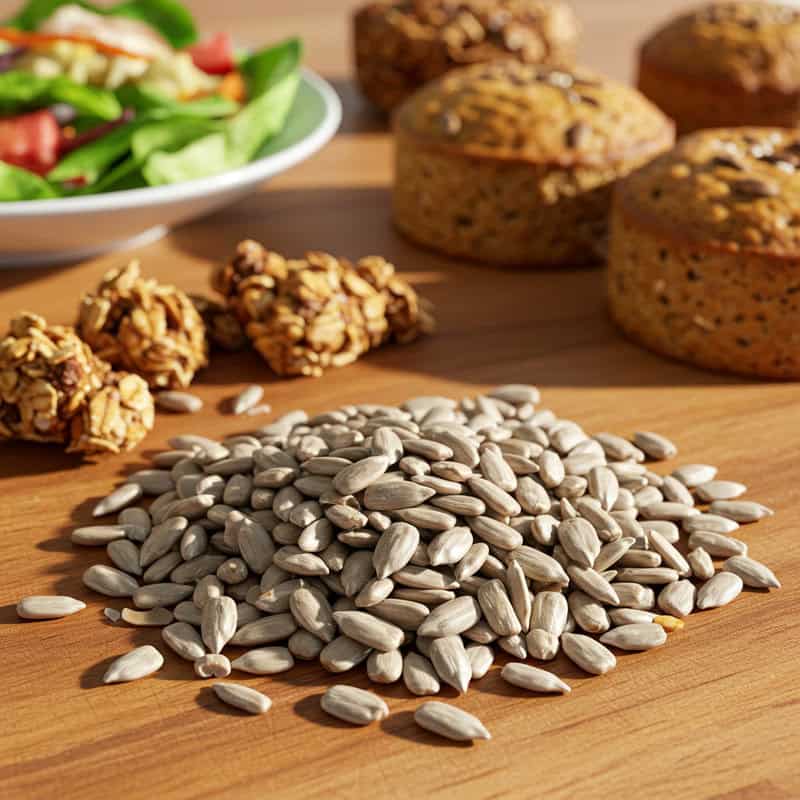
Sunflower seeds are a popular snack and a nutritious addition to salads, granola, and baked goods, providing healthy fats, protein, vitamin E, and minerals. However, sunflower seeds are also notable for their high phytate (phytic acid) content. Phytates are known to bind with minerals such as iron, forming complexes in the digestive tract that are not easily absorbed by the body. This effect is particularly relevant for non-heme iron, the form found in plant-based foods. According to the National Institutes of Health, the presence of phytates in sunflower seeds and similar foods can significantly decrease the bioavailability of iron, especially in diets where seeds and whole grains are consumed frequently and animal-based iron sources are limited.
For individuals at higher risk of iron deficiency, such as vegetarians, vegans, or women of reproductive age, it is advisable to employ preparation methods that reduce phytate content—such as soaking, sprouting, or roasting sunflower seeds. Additionally, consuming vitamin C-rich foods alongside sunflower seeds can help counteract the inhibitory effect of phytates and improve iron absorption. By being mindful of these factors, it is possible to enjoy the nutritional benefits of sunflower seeds while maintaining healthy iron status.
39. Sesame Seeds

Sesame seeds are a nutrient-dense food, valued for their high levels of healthy fats, protein, calcium, magnesium, and other minerals. However, they also contain significant amounts of oxalates and phytates—two naturally occurring compounds known to interfere with mineral absorption in the digestive tract. Oxalates can bind to calcium, forming insoluble complexes that the body cannot absorb efficiently, while phytates form similar complexes with minerals such as iron, zinc, and magnesium. According to the National Institutes of Health, these anti-nutrients can substantially decrease the bioavailability of key minerals, particularly in diets that rely heavily on seeds, nuts, and whole grains for nutrition.
For individuals who consume large amounts of sesame seeds—either whole, in tahini, or as a topping—it is important to be aware of these potential interactions. Traditional food preparation methods such as soaking, roasting, or grinding can help reduce oxalate and phytate content, thereby improving mineral absorption. Additionally, pairing sesame seeds with vitamin C-rich foods can enhance non-heme iron uptake. Balancing the inclusion of sesame seeds with a diverse array of nutrient sources ensures that their health benefits are enjoyed without compromising mineral status.
40. Oats

Oats are a staple breakfast food renowned for their heart-healthy fiber, vitamins, and minerals. However, like many whole grains, oats contain phytic acid, an anti-nutrient that can bind to minerals such as iron, zinc, and calcium in the digestive tract, reducing their absorption and potentially contributing to deficiencies if consumed in excess. This effect is particularly relevant for those who rely on oats as a primary source of nutrition or who follow diets high in whole grains. According to the National Institutes of Health, phytic acid can significantly decrease the bioavailability of essential minerals, especially in plant-based diets where animal sources of minerals are limited.
Fortunately, the impact of phytic acid in oats can be mitigated through traditional preparation methods such as soaking, fermenting, or sprouting. These techniques activate natural enzymes in the oats that break down phytic acid, thereby enhancing mineral bioavailability. For optimal nutrient absorption, it is advisable to soak oats overnight or choose fermented oat products like traditional porridge or muesli. Combining oats with vitamin C-rich fruits can further support iron absorption. With mindful preparation, it is possible to enjoy the many benefits of oats while minimizing their effect on mineral uptake.
41. Garlic (in Large Amounts)

Garlic is widely celebrated for its culinary uses and potential health benefits, thanks to its rich concentration of sulfur-containing compounds such as allicin. These compounds have been shown to possess antioxidant, anti-inflammatory, and antimicrobial properties. However, when garlic is consumed in excessive amounts, its sulfur compounds may interfere with the activity of certain enzymes involved in vitamin metabolism, particularly those related to the B vitamin family. According to research published by the National Institutes of Health, large doses of garlic can inhibit enzymes required for the activation and utilization of vitamins like thiamine (B1) and pyridoxine (B6), potentially impairing their absorption and function.
While normal culinary use of garlic poses little risk, excessive intake—such as through supplementation or consuming several cloves daily—may increase the likelihood of enzyme inhibition and subsequent vitamin imbalances. This effect is most relevant for individuals with marginal vitamin intake or those who supplement with high doses of garlic for health reasons. Moderation is key, and incorporating a varied diet with balanced amounts of garlic helps ensure optimal vitamin metabolism. Consulting with a healthcare provider is advisable for those considering high-dose garlic supplements or with underlying nutrient concerns.
42. Chia Seeds
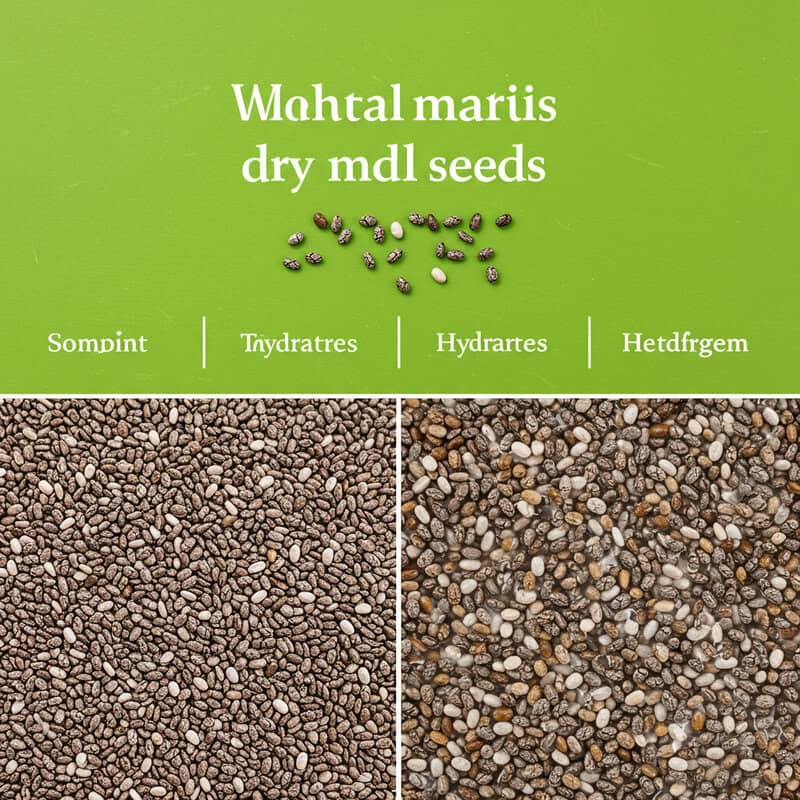
Chia seeds have gained widespread popularity for their high content of omega-3 fatty acids, fiber, protein, and essential minerals such as calcium and magnesium. Two key factors in chia seeds that can influence nutrient absorption are their mucilage—a gel-like soluble fiber that forms when the seeds are hydrated—and their naturally occurring phytate content. Mucilage can slow down digestive processes and may slightly impede the absorption of certain minerals by encapsulating them, while phytates bind directly to minerals like calcium, zinc, and iron to form insoluble complexes. According to the National Institutes of Health, the presence of mucilage and phytates in chia seeds can modestly reduce the bioavailability of key minerals, particularly when the seeds are consumed in large amounts or as a dietary staple.
For most people, the health benefits of chia seeds outweigh these minor inhibitory effects, especially when consumed as part of a balanced diet. To enhance mineral absorption, soaking chia seeds before consumption and pairing them with vitamin C-rich foods can help counteract the effects of phytates. Including a variety of nutrient sources and preparation methods ensures optimal nutrient uptake and allows for the continued enjoyment of chia’s health benefits.
43. Avocado

Avocado is renowned for its creamy texture and high levels of healthy monounsaturated fats, along with a variety of vitamins and minerals. It also contains significant amounts of both soluble and insoluble fiber, which contribute to digestive health and satiety. However, these fibers—especially the soluble type—can form gels in the gut that may mildly hinder the absorption of certain minerals, such as calcium, magnesium, and iron, particularly when consumed alongside mineral supplements. The fiber encapsulates some nutrients, slowing their release and potentially reducing immediate bioavailability. According to the National Institutes of Health, dietary fibers can have a modest inhibitory effect on mineral absorption, though this is less pronounced than with anti-nutrients like phytates or oxalates.
For individuals who rely on supplements for key minerals, consuming avocado at a different time from supplement intake may help optimize nutrient absorption. The overall impact of avocado’s fiber on mineral uptake is generally minimal, particularly in the context of a varied diet. The health benefits of avocados—including heart health, nutrient density, and digestive support—far outweigh any minor inhibitory effects, especially when attention is paid to timing and dietary diversity.
44. Beet Greens

Beet greens, the leafy tops of the beetroot plant, are rich in vitamins A, C, and K, as well as minerals like calcium and magnesium. However, they also contain high concentrations of oxalates—naturally occurring compounds that can significantly impact mineral absorption. Oxalates readily bind to calcium and magnesium in the digestive tract, forming insoluble salts that the body cannot absorb efficiently. According to the National Institutes of Health, diets high in oxalate-rich foods, such as beet greens, spinach, and rhubarb, can reduce the bioavailability of these essential minerals and may increase the risk of kidney stone formation, particularly in susceptible individuals.
For most people, occasional consumption of beet greens as part of a varied diet is unlikely to cause significant mineral deficiencies. However, those who consume large amounts of oxalate-rich greens or have a history of kidney stones should monitor their intake. Cooking beet greens helps reduce oxalate levels and improves mineral absorption. Pairing beet greens with vitamin C-rich foods may also help offset some inhibitory effects on mineral uptake. Awareness of the oxalate content in beet greens can help individuals optimize their mineral status while still benefiting from the greens’ valuable nutrients.
45. Lentils

Lentils are a nutritional powerhouse, providing protein, fiber, and a range of vitamins and minerals, making them a staple in vegetarian and plant-based diets. However, lentils also contain notable amounts of phytic acid and tannins, two anti-nutrients that can negatively affect the absorption of key minerals such as iron, zinc, and calcium. Phytic acid binds with minerals in the digestive tract, forming insoluble complexes that cannot be absorbed efficiently, while tannins further inhibit non-heme iron uptake. According to research published by the National Institutes of Health, the inhibitory effects are particularly pronounced in unsoaked or undercooked lentils, as these preparation methods do not sufficiently reduce anti-nutrient levels.
To enhance the bioavailability of minerals from lentils, it is recommended to soak, sprout, or thoroughly cook them before consumption. These traditional techniques help degrade phytic acid and tannins, increasing the absorption of essential nutrients. Pairing lentils with vitamin C-rich foods, such as tomatoes or bell peppers, can further improve iron uptake. By choosing proper preparation methods and combining lentils with nutrient boosters, it is possible to enjoy their health benefits while minimizing the impact of anti-nutrients on mineral absorption.
46. Pumpkin Seeds
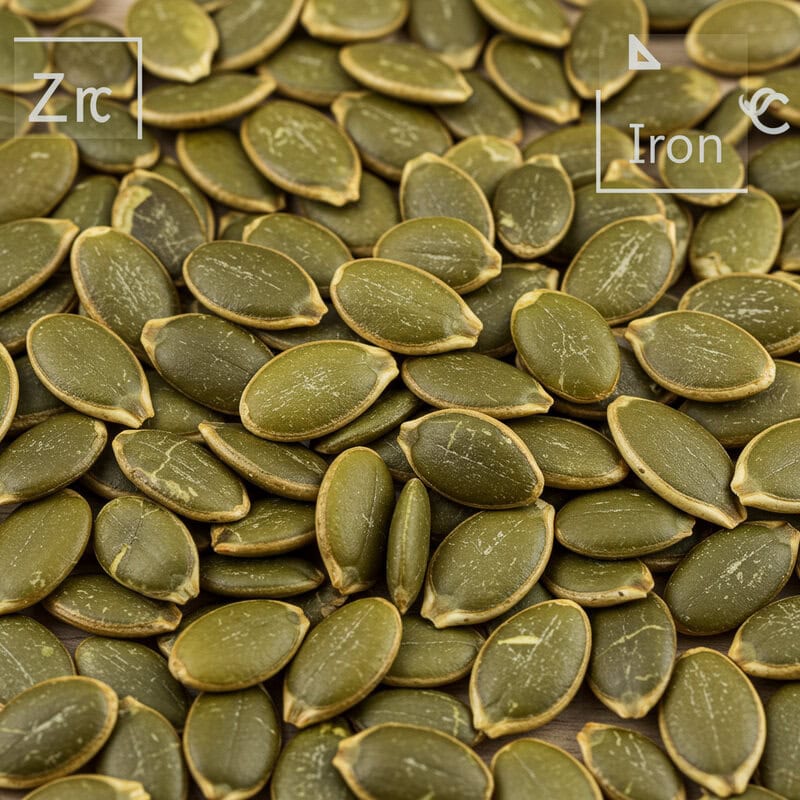
Pumpkin seeds, also known as pepitas, are a rich source of protein, healthy fats, magnesium, zinc, and iron, making them a popular snack and ingredient in various cuisines. However, like many seeds, pumpkin seeds are also high in phytates (phytic acid), a naturally occurring compound that can bind to minerals in the digestive tract and reduce their bioavailability. Phytates form insoluble complexes with zinc and iron, making these essential minerals less available for absorption by the body. According to the National Institutes of Health, high-phytate diets can contribute to zinc and iron deficiencies, especially in individuals who rely heavily on plant-based sources of these minerals.
To minimize the inhibitory effects of phytates in pumpkin seeds, traditional preparation methods such as soaking, roasting, or sprouting can be employed. These processes help to break down some of the phytic acid, improving mineral bioavailability. Consuming pumpkin seeds with vitamin C-rich foods can also enhance iron absorption. While pumpkin seeds are nutritious and beneficial for most people, understanding and addressing the impact of phytates helps ensure that their valuable minerals are effectively absorbed and utilized by the body.
47. Flaxseeds

Flaxseeds are highly valued for their omega-3 fatty acids, fiber, and lignan content, making them a staple in many health-conscious diets. However, these seeds also contain two components that can mildly affect nutrient absorption: lignans and mucilage. Lignans are polyphenolic compounds with phytoestrogen properties, and mucilage is a gel-forming soluble fiber that develops when flaxseeds are hydrated. While both are associated with digestive and cardiovascular benefits, they can also slightly hinder the absorption of certain nutrients by binding to minerals or slowing their transit through the digestive tract. According to the National Institutes of Health, the mucilage in flaxseeds may reduce the immediate bioavailability of minerals like calcium and magnesium, while lignans may also form complexes with micronutrients such as zinc and iron.
The effect of these compounds on nutrient uptake is generally mild, especially when flaxseeds are consumed as part of a balanced and varied diet. Grinding flaxseeds before consumption can help maximize the absorption of their beneficial nutrients. For individuals with higher mineral requirements, pairing flaxseeds with vitamin C-rich foods or consuming them at separate times from mineral supplements may further support optimal nutrient absorption while enjoying their many health benefits.
48. Egg Yolk (with Certain Medications)

Egg yolk is a nutrient-rich food containing healthy fats, high-quality protein, and significant levels of fat-soluble vitamins such as vitamins A, D, E, and K. However, the substantial fat content in egg yolks can influence the absorption and metabolism of these vitamins, particularly when taken concurrently with certain medications. Some drugs, including cholesterol-lowering agents (like bile acid sequestrants) and fat-blocking medications (such as orlistat), are designed to inhibit the digestion and absorption of dietary fats. According to the National Institutes of Health, these medications can reduce the bioavailability of fat-soluble vitamins from foods like egg yolk by preventing the formation of micelles—structures required for the absorption of fats and fat-soluble nutrients in the intestine.
As a result, individuals undergoing drug therapy that affects fat digestion may experience impaired absorption of fat-soluble vitamins, even when consuming nutrient-dense foods like egg yolk. Healthcare professionals often recommend taking such medications at a different time from meals containing egg yolk or supplementing with additional fat-soluble vitamins, if needed. Understanding these interactions is essential for maintaining adequate vitamin status during drug therapy and ensuring the best use of both dietary and supplemental nutrients.
49. White Rice

White rice is a dietary staple for billions of people worldwide, prized for its mild flavor, versatility, and easy digestion. The refining process that produces white rice involves removing the bran and germ layers, which significantly reduces the levels of anti-nutrients such as phytic acid—compounds that can inhibit mineral absorption in whole grains. While this milling process can enhance the bioavailability of certain minerals, it also strips away many essential nutrients, particularly B vitamins like thiamine (B1), niacin (B3), and folate, as well as fiber and trace minerals. According to the National Institutes of Health, the loss of these nutrients during milling can contribute to deficiencies in populations that rely heavily on white rice as a dietary mainstay.
To address this issue, many countries fortify white rice with B vitamins and iron, but the nutritional profile remains less robust than that of whole grain brown rice. While white rice is less likely to hinder mineral absorption due to its lower anti-nutrient content, its lower vitamin and mineral content highlights the importance of dietary variety. Including a mix of whole grains, legumes, and fortified foods can help ensure balanced nutrition and reduce the risk of deficiencies.
50. Seaweed (Excess Iodine)
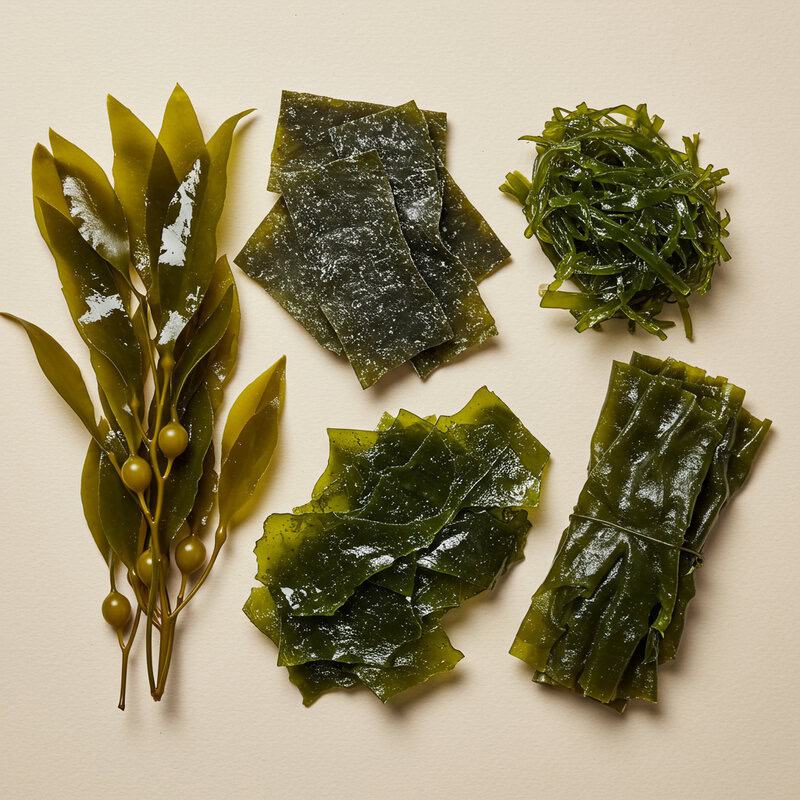
Seaweed is a nutrient-dense food commonly consumed in Asian cuisines, celebrated for its high mineral content, especially iodine. While iodine is essential for healthy thyroid function and the production of thyroid hormones, excessive intake from seaweed—particularly varieties like kelp, kombu, and wakame—can lead to thyroid dysfunction. According to the National Institutes of Health Office of Dietary Supplements, too much iodine can disrupt the delicate balance of thyroid hormones, resulting in conditions such as hyperthyroidism or hypothyroidism.
Thyroid hormones play a central role in regulating metabolism, energy production, and the activation and conversion of several vitamins, including vitamin A and certain B vitamins. Overconsumption of seaweed can therefore indirectly affect vitamin metabolism, leading to imbalances and deficiencies even if dietary vitamin intake appears adequate. The risk is heightened for individuals with pre-existing thyroid issues or those who consume large amounts of seaweed regularly. Moderation is key; enjoying seaweed as an occasional part of a varied diet supports iodine needs without overwhelming the thyroid. Those with thyroid disorders should consult a healthcare professional regarding safe seaweed consumption to protect both thyroid and vitamin health.
Conclusion
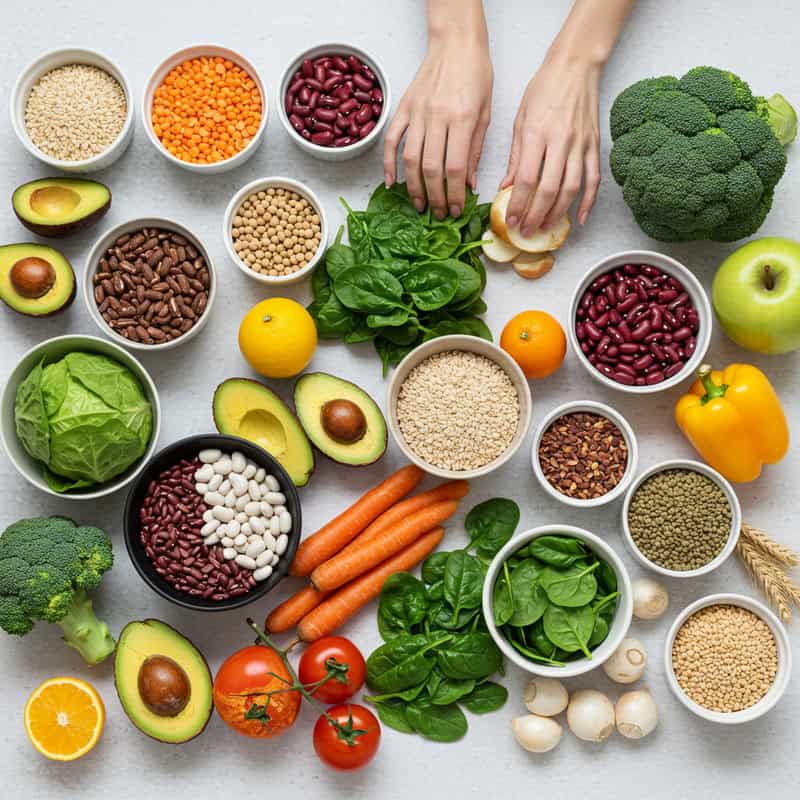
While many foods offer substantial health benefits, hidden nutrient blockers like phytates, oxalates, tannins, and others can quietly impede vitamin and mineral absorption, potentially leading to deficiencies over time. Being aware of these interactions and practicing mindful meal planning—such as proper food preparation and thoughtful pairing—can help maximize nutrient uptake. If you experience persistent symptoms of deficiency or have dietary restrictions, it may be wise to consult a healthcare provider or consider vitamin and mineral testing. Personalized guidance can help ensure balanced nutrition and well-being. For more information on nutrient absorption and deficiency risks, visit the National Institutes of Health Office of Dietary Supplements.
Disclaimer
The information provided in this article is for general informational purposes only. While we strive to keep the information up-to-date and correct, we make no representations or warranties of any kind, express or implied, about the completeness, accuracy, reliability, suitability, or availability with respect to the article or the information, products, services, or related graphics contained in the article for any purpose. Any reliance you place on such information is therefore strictly at your own risk.
In no event will we be liable for any loss or damage including without limitation, indirect or consequential loss or damage, or any loss or damage whatsoever arising from loss of data or profits arising out of, or in connection with, the use of this article.
Through this article you are able to link to other websites which are not under our control. We have no control over the nature, content, and availability of those sites. The inclusion of any links does not necessarily imply a recommendation or endorse the views expressed within them.
Every effort is made to keep the article up and running smoothly. However, we take no responsibility for, and will not be liable for, the article being temporarily unavailable due to technical issues beyond our control.





